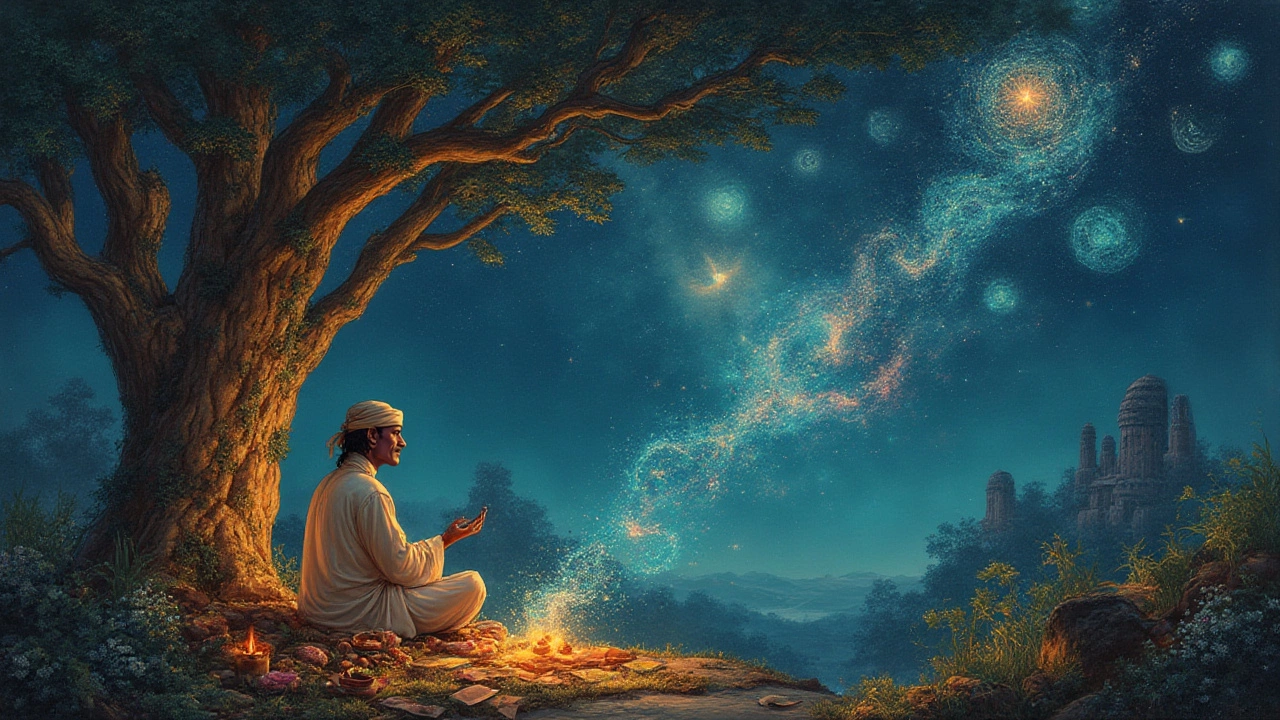
Indian Philosophy of Dreams: Ancient Wisdom, Myths, and Modern Interpretations
Dive into Indian philosophy of dreams—how ancient texts, spiritual practices, and cultural beliefs explain what dreams mean, why we have them, and how to use them.
If you’ve ever heard the terms Vedas, Upanishads, or Bhagavad Gita, you probably wondered what they actually contain. In simple words, these are the oldest spiritual and philosophical books from India. They were written thousands of years ago, yet they still shape how many people think about life, duty, and the universe.
The Vedas are a collection of four huge volumes – Rig, Yajur, Sama, and Atharva. They mix hymns, rituals, and early science. Think of them as the first encyclopedia of Indian thought. The Upanishads come later and dig deeper into the meaning behind those Vedic verses. They ask big questions like “What is the real self?” and give answers that sound modern even today.
The Bhagavad Gita is a conversation between the warrior Arjuna and the god Krishna, set on a battlefield. It boils down complex ideas about duty, love, and freedom into a story you can follow. Most people start with the Gita because it’s shorter and more practical for everyday life.
Pick one text, not all at once. If you’re new, try a modern translation of the Gita that includes short explanations. Read a few verses a day and think about how they apply to your own choices – work, relationships, stress. For the Upanishads, start with the Isha or Kena Upanishad; they’re brief and give a taste of the deeper philosophy.
Don’t chase every ancient term. Many words have been explained in footnotes or online glossaries. Use a simple guide or a YouTube video that walks you through the story. The goal is to get the vibe, not to become a scholar in one week.
Another tip: discuss what you read with friends or online groups. Talking about a verse helps you see different angles and keeps the material from feeling abstract. You’ll also discover that many modern thinkers reference these scriptures, showing their lasting influence.
Finally, keep a notebook. Jot down a line that strikes you, how you felt, and any question that pops up. Over time you’ll notice patterns – maybe you’re drawn to ideas about inner peace or doing your duty. This personal log turns ancient wisdom into a practical guide for your own life.
Ancient Indian scriptures aren’t just old books; they’re living conversations about what it means to be human. By picking a starting point, reading a little each day, and reflecting on the ideas, you can tap into a tradition that has guided millions for centuries. Give it a try – you might find answers you didn’t know you were looking for.

Dive into Indian philosophy of dreams—how ancient texts, spiritual practices, and cultural beliefs explain what dreams mean, why we have them, and how to use them.